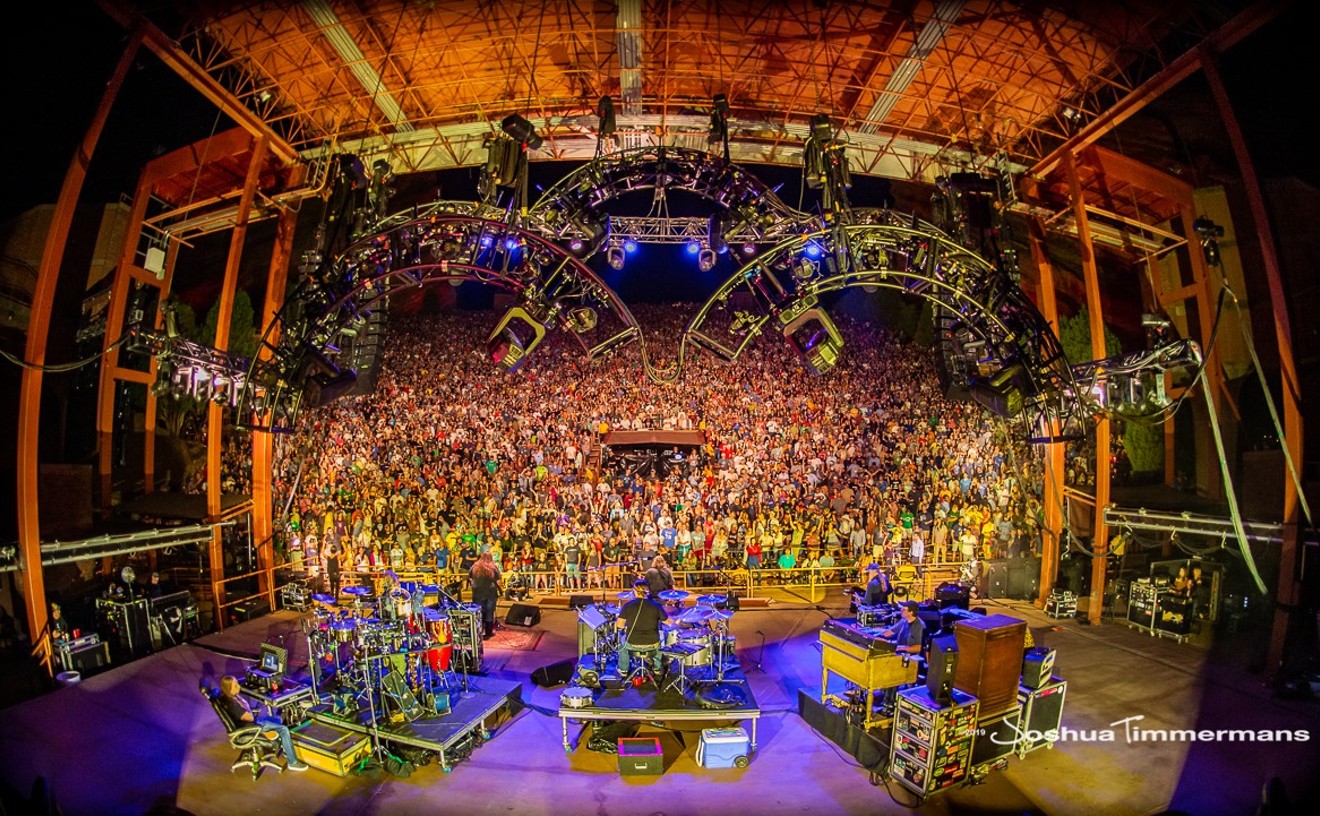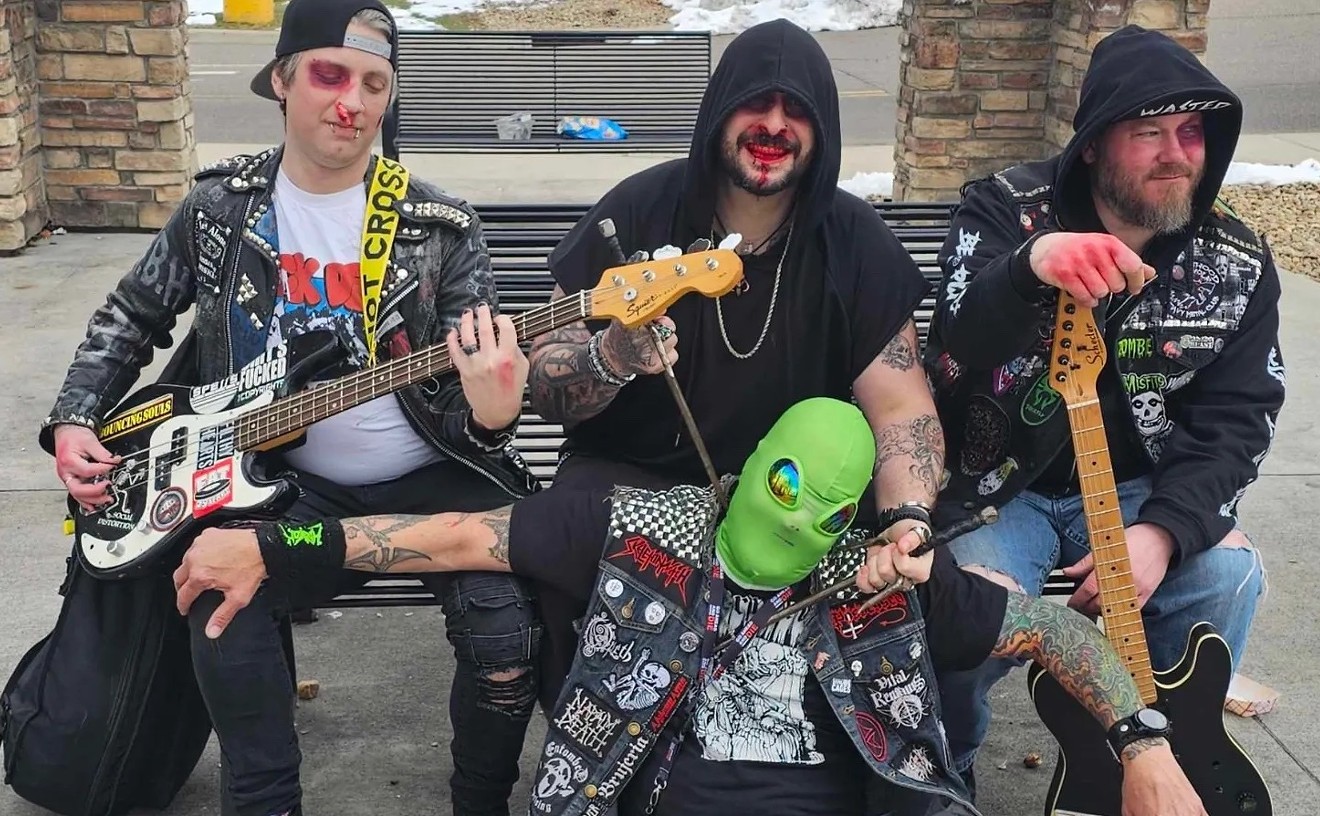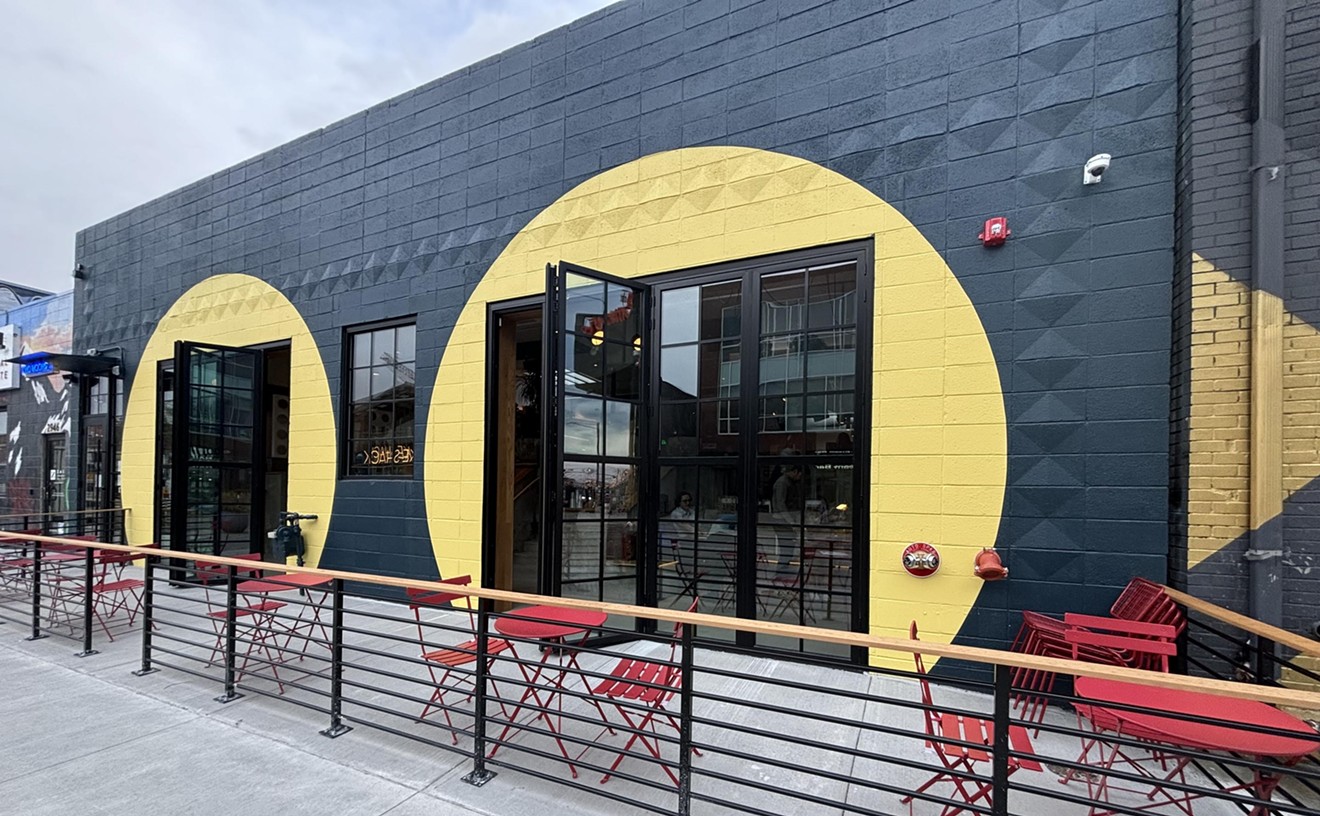Robert's booth, Balloon A-Rama, is just one piece of Riot Fest's sideshow. It fits in with the Ferris wheel and tilt-a-whirl, the funnel cakes and freak show. All day long it will provide a place for stoned teenagers and drunk moms to take a break from the music and enjoy some carnival fun straight from childhood.
See also: The Rides of Riot Fest, Ranked
Robert is one of eight carnies traveling with an amusement company that brings games and rides to special events across the country. The group is on the road eleven months of the year, so their booths become their homes, their co-workers their family. It's a hard life, with eighteen-hour workdays and constant financial instability, but Robert loves it.
An Army brat, Robert ran away from home when he was eighteen and joined the Ohio State Fair as a Crazy Ball operator. 29 years later, he's still on the road. He loves the travel, loves meeting new people, and loves having a giant "extended family." Robert says he makes a lot of new family members in the carnival business, even if it's five or ten years before he sees them again. He points to a man operating the tilt-a-whirl. "That's an old friend. Haven't seen him in ten years, and here he is. I love that." Running Balloon A-Rama is not a glamorous job (last night Robert slept in a small compartment in the roof of his booth with the stuffed animals), but Robert says it's a job that he happily chooses. Besides, money in the carnival business isn't always bad. In some weeks, Robert's booth will make $2,000 or more. That means Balloon A-Rama can pull in upwards of $90,000 per year. But that's on a good week, which this week is not. Unlike State Fairs, which keep Robert moving all day, Riot Fest leaves Robert standing and waiting most of the day. At 2 p.m., Robert has had only 18 customers. He's kept track.Partly because the carnies work on commission and partly because they live in a world where everything is a game, they have a competition between the booths to see who can get the most customers and make the most money. At State Fairs, Robert wins no problem. Unlike your traditional balloon and darts game, Balloon A-Rama is a game that always has a winner. Two people shoot water guns at targets that pump air into a balloon, and the first person to pop the balloon wins. People usually like no-risk games like this, but not at Riot Fest. Riot Festers apparently prefer to live on the edge. On Riot Fest's first day, Machine Gun Alley, an almost un-winnable target shooting game with lead-filled shotguns, was the day's most profitable booth, and even it had a below average customer count.
Rob Salerno, owner of All Around Amusement and coordinator of the rides across from Robert's booth, knows that Riot Fest is not the most profitable carnival venture. Like Robert, he's at Riot Fest because he wants to be. He brought his rides down from Chicago's Riot Fest because he loves seeing people so excited to be someplace. Salerno is so dedicated to making Riot Fest a success that between shows he runs around picking up trash with the garbage collectors. A man with a big belly and a bigger voice, he walks through the parking lot yelling "pregnant lady coming through" to clear the way for the skinny collectors behind him. "If I can help make Riot Fest a success, I will," he says. "Even if that means picking up trash."
Learn how Robert's day ends on the next page. 3 p.m., and there's still hope that Robert could be more successful than his friends. Prime time (7 to 9) is coming, and Robert's game is an attention-getter."Watch this," he says, grabbing a balloon from his back pocket. He blows up the balloon slowly, pointing to a group of hipsters twenty feet away. Robert blows until the balloon pops, making everyone within earshot jump and look his way. He grins the guiltily smile of a kid caught rigging a mousetrap. "See? They'll all come over now." And they do.
You can tell Robert genuinely thinks his game is the most fun and, at only $3, the best value. What Robert doesn't seem to notice, or at least comment on, is that as many people come to Balloon A-Rama for him as do for the actual game ("poppin' rubbers). He's approachable -- a man with welcoming eyes and hair to his waist (though it's tucked up in a baseball cap most of the day). Robert knows how to read people, so he knows how to help them have a good time. He says he can guess a person's age, weight, and birth month after a few minutes talking to them (he successfully demonstrates this a few times), and he instinctively knows if any given person is going to come to his game. Though he has a microphone and a kick-ass auction cry, he doesn't try to entice every person that walks by. But he does always try for the kids. Robert says it's the kids, their reactions to the growing balloons and giant teddy bears, that keep him in the carnival business. If a kid plays Robert's game multiple times and keeps losing to her opponent, Robert will give them a prize anyway just to make them happy, because that's what his job is about. He has two kids of his own, now 18 and 21, who he sees once a year at the Ohio State Fair. When they were growing up, Robert would make up for the time spent apart by giving them anything they wanted at the fair, loading up a bag five-feet-tall with stuffed animals. When the crew goes to Ohio later this year, Robert will see his new granddaughter.By 5 p.m., Robert's luck has slightly improved. He has only had about 300 customers, but that's more than Machine Gun Alley. By now, Robert has figured out exactly what kind of clientele he is dealing with --the drunk kind. He says the key to success in the carnival business is always "location, location, location," but this is especially true with drunk customers. You have to be somewhere where people can be easily attracted by bright lights and giant stuffed unicorns (Riot Fest's most popular prize). Robert calls his spot between the May Farms and Byers General Store stages "the killing field," because it's so easy to attract people before they even see the other games.
The music is so loud that even with his microphone, you can't hear what Robert is saying without leaning in next to his face. Drunk fans occasionally jump up and try to rip stuffed animals from the booth as they pass. It's a rough night on the job, but you wouldn't know it looking at Robert. He still smiles at all his customers, bobs his head to music he's never heard of, and counts.
Just before 9 p.m., the end of carnival game prime time, Robert has had just over 800 customers. That's about 200 less than he was hoping for, but 400 more than Machine Gun Alley.
"You gotta take the good with the bad," Robert says with a smile. "The bad with the good."











